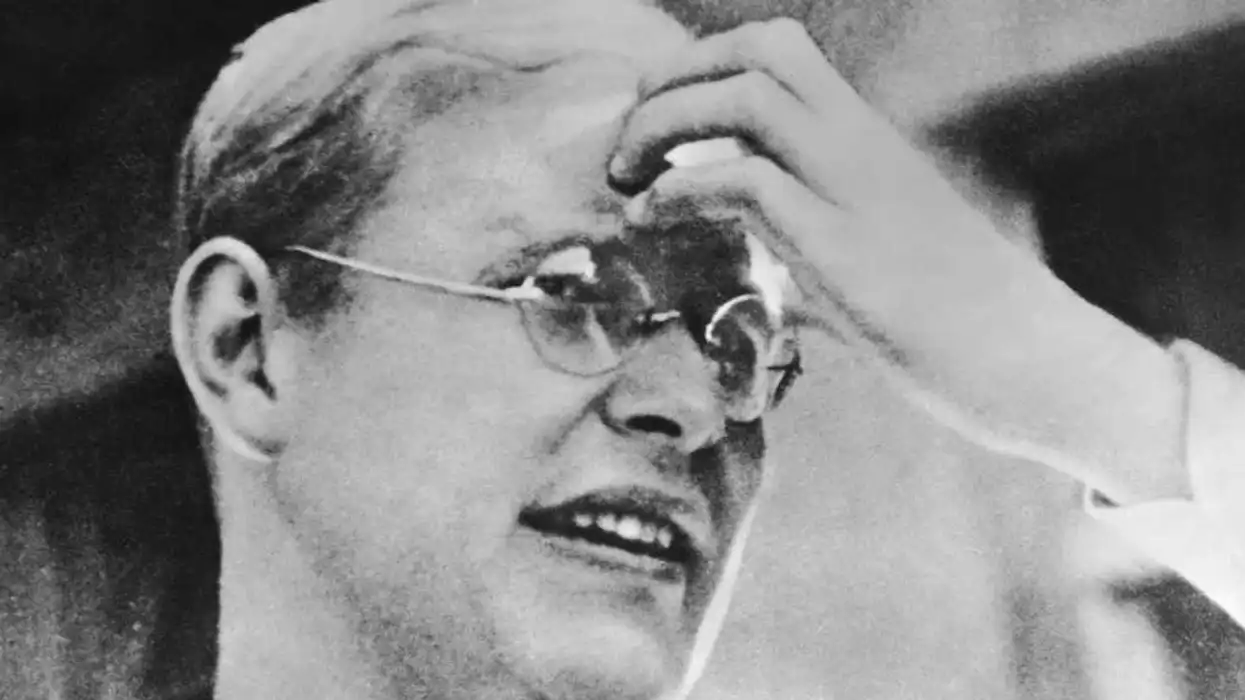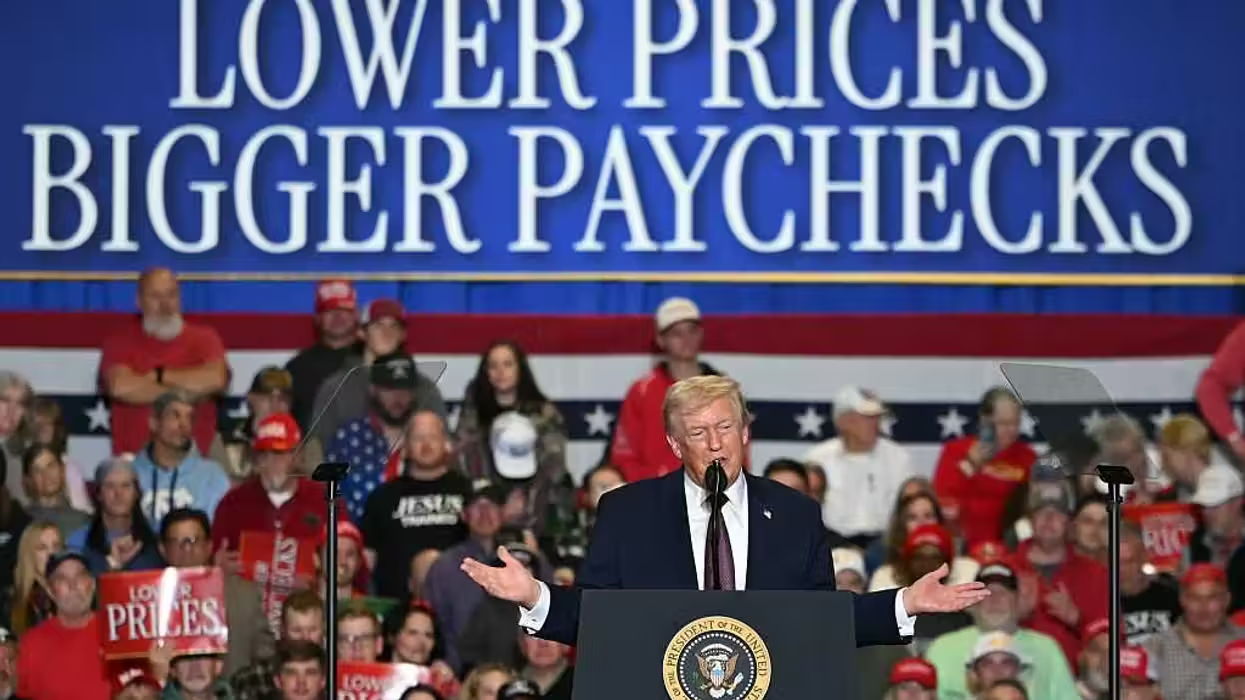
© 2026 Blaze Media LLC. All rights reserved.
On an original "spooky dude," the shattering of the 19th century industrial education model, and much much more.
Below are some of the quotes we found particularly insightful and revealing from Glenn Reynolds' (aka Instapundit's) "The New School." Be sure to check out our review and interview with Professor Reynolds for more on his new book.
 Horace Mann Daguerreotype by Southworth & Hawes. (Image Source: Wikipedia Commons)
Horace Mann Daguerreotype by Southworth & Hawes. (Image Source: Wikipedia Commons)
1. Before there was John Dewey, there was Horace Mann "On his return, Mann extolled the Prussian model...This met with some resistance, as critics accused him of wanting to establish a "Prussian-style tyranny" in the schools, arguing that the Prussian model was based on a presumption that government was wiser the the citizenry, while in America the presumption was the reverse. There was considerable basis for this complaint. Prussian theorists regarded public education, and higher education as well, as an institution of "police" and a way of making students "useful as future tools," -- but Mann's idea ultimately caught on for the most part. Mann wanted to remake society, and he wanted to start with children. In his turn of phrase, "men are cast-iron, but children are wax." Just as the Prussian model had as much to do with political and social order as with teaching and learning, so it was with Mann's Americanized Prussian model." (pgs. 6-7)
2. The traditional public school as factory "This approach not only reflected Mann's social views but also met the economic needs of the day. Thus, the traditional public school: like a factory, it runs like a bell. Like machines in a factory, desks and students are lined up in orderly rows. When shifts (classes) change, the bell rings again, and students go on to the next class. And within each class, the subjects are the same, the assignments are the same, regardless of the characteristics of individual students...A teacher in a modern industrial-era school was like a factory worker, performing standardized operations on standardized parts." (pg. 7)
 Ford Assembly line in 1913. (Image Source: Wikipedia Commons)
Ford Assembly line in 1913. (Image Source: Wikipedia Commons)
3. Teachers as assembly-line workers
"Just as an assembly-line worker, in performing the same repetitive over and over again, loses touch with the end product -- and tends to focus on job descriptions over substance -- so too did industrial-model teachers lose touch with the ultimate goal of producing an educated person." (pgs. 7-8)
4. In praise of academic rigor "Post-bubble, perhaps students -- and employers, not to mention parents and lenders -- will focus instead on education that fosters economic value. And that is likely to press colleges to focus on more useful majors. (That doesn't necessarily rule out traditional liberal-arts majors, so long as they are rigorous and require a real general education, rather than trendy and easy subjects, but the key word here is rigorous.)" (pgs. 18-19)
5. The far-reaching effects of overly-indebted students "And even students who can earn enough to service their debts may find themselves constrained in other ways: it's hard to get a mortgage, for example, when you're already, in effect, paying one in the form of student loans. This has implications for the housing bubble, too, of course, since the traditional source of new home-buyers and move-up home buyers -- people a few years out of college or grad school -- now suffers from an unprecedented debt burden. And, in fact, there's considerable evidence that student-loan debt is already slowing the economy, as indebted students put off marriage, new cars, or house purchases because they're already hurting financially." (pg. 23)
6. Why go for an education when you can get a Ferrari "...the traditional approach to higher education no longer makes as much sense. When education was cheap enough that students could pay their own way through by working part-time, "study what interests you" was reasonable advice. Some criticize today's students for being more concerned about return on investment than about pure learning, but when the investment runs well into six figures, students would be crazy not to worry about the return it generates. The difference between an investment and a consumption item is that an investment can be expected to pay for itself eventually. A consumption item just involves the exchange of cash for something that is, well, consumed. A six-figure consumption item is well beyond the resources of college students -- nobody would advise an 18-year-old to purchase a Ferrari on borrowed money, after all -- but if a college education is a consumption item, not an investment, then that's basically what they are doing." (pg. 25)
 College Tuition vs Medical Care vs Home Prices vs CPI: All Items (1978-2011). (Source: mjperry.blogspot.com)
College Tuition vs Medical Care vs Home Prices vs CPI: All Items (1978-2011). (Source: mjperry.blogspot.com)
7. When diversity studies trump everything else "Even as the once-mighty University of California system slashes programs and raises tuition, it has created a new systemwide "vice chancellor for equity, diversity, and inclusion." This on top of the already enormous University of California diversity machine, which, as Heather Mac Donald notes, "includes the Chancellor's Diversity Office, the associate vice chancellor for faculty equity the assistance vice chancellor for diversity, the faculty equity advisors, the graduate diversity coordinators, the staff diversity liaison, the undergraduate student diversity liaison, the graduate student diversity liaison, the chief diversity officer, the director of development for diversity initiatives, the Office of Academic Diversity and Equal Opportunity, the Committee on Gender Identity and Sexual Orientation Issues, the Committee on the Status of Women, the Campus Council on Climate, Culture and Inclusion, the Diversity Council, and the directors of the Cross-Cultural Center, the Lesbian Gay Bisexual Transgender Resource Center, and the Women's Center. While the UC system loses top cancer researchers to Rice University, it is creating new chaired professorships in, you guessed it, diversity studies...This sort of thing illustrates the kind of priorities that emerge in a bubble that is not only financial but also intellectual." (pg. 27)
8. Skilled trades > knowledge jobs? "...the Bureau of Labor Statistics predicts that 7 of the 10 fastest-growing jobs in the next decade will be based on on-the-job training rather than higher education. (And they'll be hands-on jobs that are hard to outsource to foreigners: if you want your toilet fixed, it can't be done by somebody in Bangalore. In this sense, knowledge jobs, once touted as better than skilled trades -- in Steve Earle's song, "Hillbilly Highway," his grandfather sent his father off to college so he could have a good job that would "use his brains and not his hands" -- may now be less secure and less well compensated because "knowledge workers" and "symbolic analysts" are competing with everyone in the world, while your plumber is only competing with other plumbers within easy driving distance of your house). If the Post is right about this trend, a bursting of the bubble is growing likelier." (pg. 38)
9. Ritz Carlton U? "Perhaps we'll even see the rise of "hoteling" for colleges. If people want the college experience of late-night dorm bull sessions, partying, and pizza, why not give it to them but outsource the actual teaching? Build a nice campus -- or buy one --, from a defunct traditional school -- put in a lot of amenities, but don't bother hiring faculty: Just bring in your courses online, with engineering from Georgia Tech, arts and literature from Yale, business from Stanford, and so on. Hire some unemployed PhDs as tutors (there'll be plenty of those around, available at bargain-basement rates) and offer an unbundled college experience: We provide the rock-climbing wall and Jacuzzis, the Ivy League provides the teaching! It's a business model that just might work, especially in geographic locations students favor, and certainly many more-traditional higher-ed enterprises would have reason to fear it." (pgs. 47-48)
10. Bailouts? "There will likely be at least one major effort to secure federal bailout money for the higher education sector, but the prospects for that relief seem poor. The nation is already in sad financial shape, and higher education already received a substantial slug of "stimulus" money in 2009 that was mostly used to conduct business as usual for a bit longer. Should another bailout occur, its impact is likely to be similarly short-lived. At any rate, ironically enough, the social programs that many academics have long supported now represent much more powerful political interest groups, meaning that in competition for scare resources, higher education is likely to find itself outnumbered and outgunned by other claims on the public fisc. But that's okay. The higher education bubble isn't bursting because of a shortage of money. It is bursting because of a shortage of value. The solution is to improve the product, not to increase the subsidy." (pg. 54)
 Students protest the rising costs of student loans for higher education on Hollywood Boulevard on September 22, 2012 in the Hollywood section of Los Angeles, California. Citing bank bailouts, the protesters called for student debt cancelations. (Credit: David McNew/Getty Images)
Students protest the rising costs of student loans for higher education on Hollywood Boulevard on September 22, 2012 in the Hollywood section of Los Angeles, California. Citing bank bailouts, the protesters called for student debt cancelations. (Credit: David McNew/Getty Images)
11. 19th century industrial methods don't work in the knowledge age "Industrial Revolution schooling involved Industrial Revolution goals and Industrial Revolution methods -- organization, standardization, and an overall assembly-line approach. In fact, the industrial-era public school (which persists to the present) is basically an assembly line: kindergartners come in at one end; graduates with diplomas emerge at the toher. Each year they advance to the next stage (grade), where the next group of assembly workers (teachers) performs the standardized tasks (curricula) to advance the product (students) to the next assembly stage (grade). Eventually, they roll off the assembly line and into the marketplace at graduation...But while it worked then [in the 19th] century...Education is a knowledge industry...and why should we expect a knowledge industry in the 21st century to succeed by following a model pioneered in the 19th? As [author Seth] Godin says, 'Every year, we churn out millions of workers who are trained to do 1925-style labor.'" (pgs. 62-63)
12. Teen infantilization and the rise of the academic administrator "...there are a lot of people who benefit from keeping teens infantilized. That includes people in our ever more expensive K-12 education system. What's more, as we've increased the amount of money going in, there's been no corresponding increase in learning. One reason for that is that a disproportionate amount of money has gone into administration, rather than teaching. [According to a report titled The School Staffing Surge: Decades of Employment Growth in America's Public Schools] "Between 1950 and 2009, the number of K-12 public school students increased by 96 percent. During that same period, the number of full-time equivalent (FTE) school employees grew by 386 percent. Of those personnel, the number of teachers increased by 252 percent, while the ranks of administrators and other staff grew by 702 percent -- more than 7 times the increase in students. These education administrators don't teach; if anything, they create excess paperwork for the people who do...This is one reason more money hasn't improved things: it's not going to teaching but to paper pushing." (pg. 67)
Want to leave a tip?
We answer to you. Help keep our content free of advertisers and big tech censorship by leaving a tip today.
Want to join the conversation?
Already a subscriber?
Ben Weingarten is a writer, commentator, and editor at large at RealClearInvestigations. He is a senior contributor at the Federalist and writes columns for Newsweek and the Epoch Times.
Ben Weingarten
Ben Weingarten is a writer, commentator, and editor at large at RealClearInvestigations. He is a senior contributor at the Federalist and writes columns for Newsweek and the Epoch Times.
more stories
Sign up for the Blaze newsletter
By signing up, you agree to our Privacy Policy and Terms of Use, and agree to receive content that may sometimes include advertisements. You may opt out at any time.
Related Content
© 2026 Blaze Media LLC. All rights reserved.
Get the stories that matter most delivered directly to your inbox.
By signing up, you agree to our Privacy Policy and Terms of Use, and agree to receive content that may sometimes include advertisements. You may opt out at any time.






